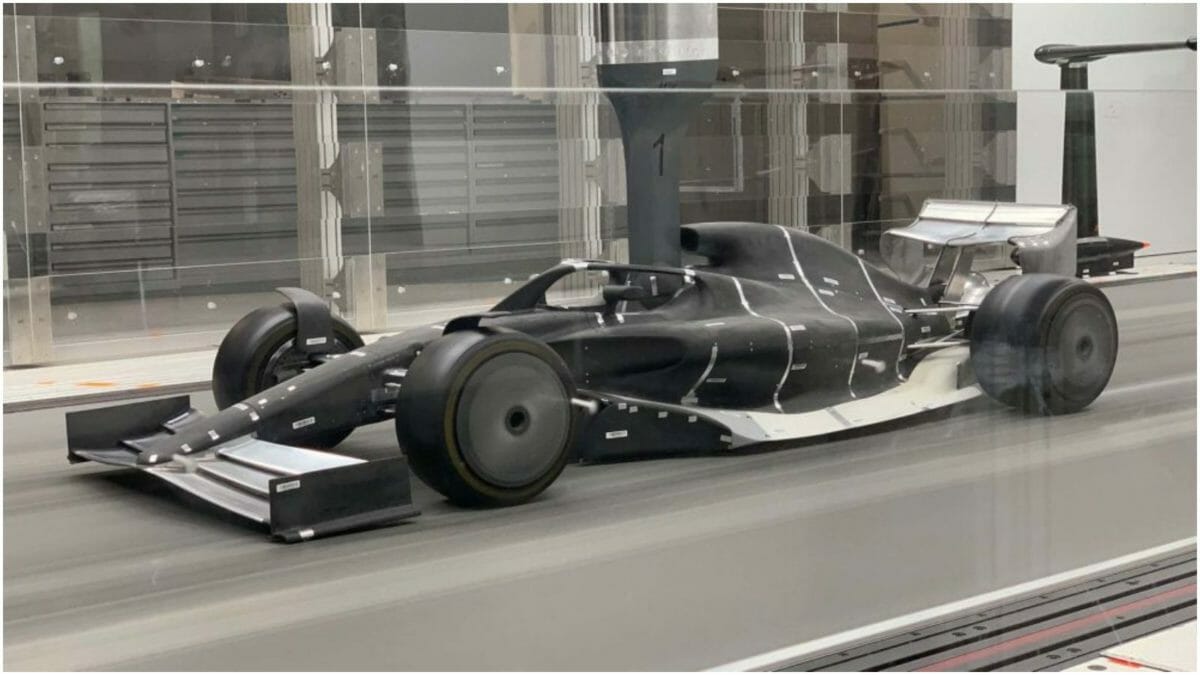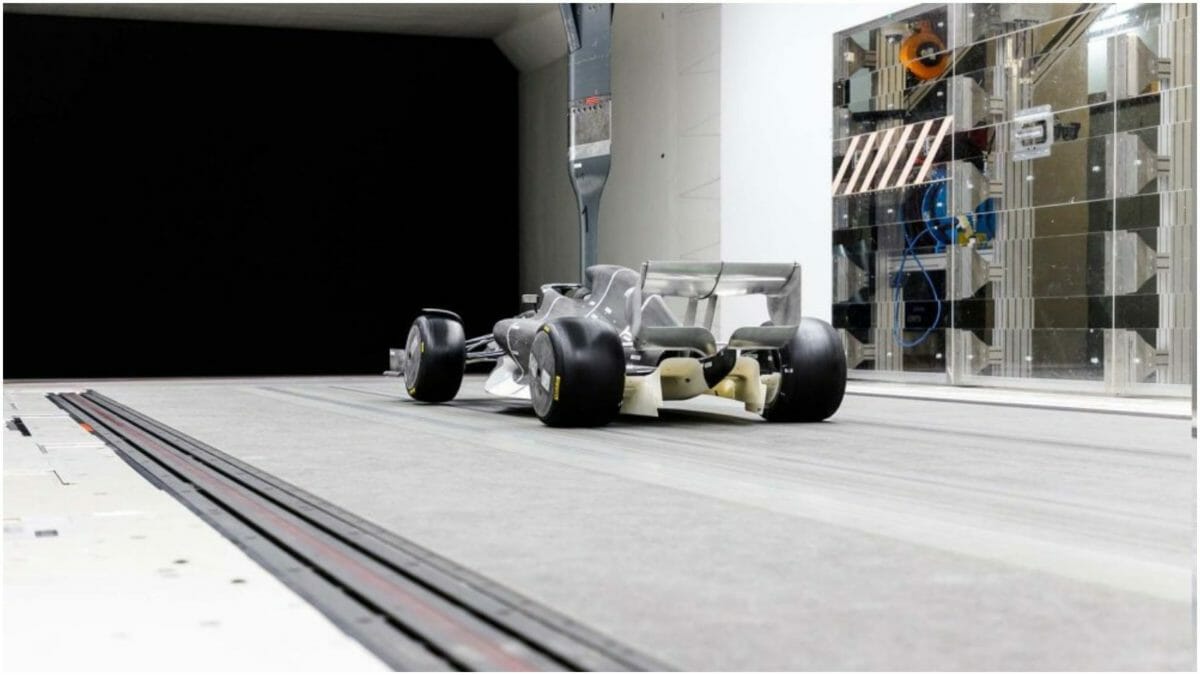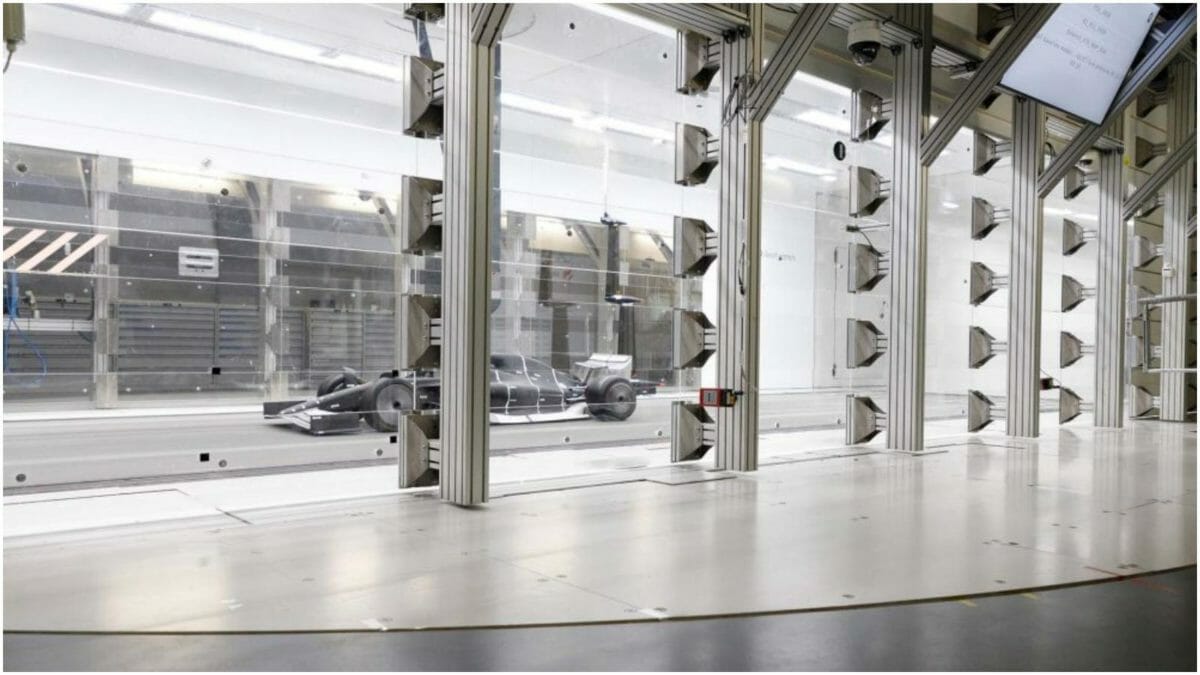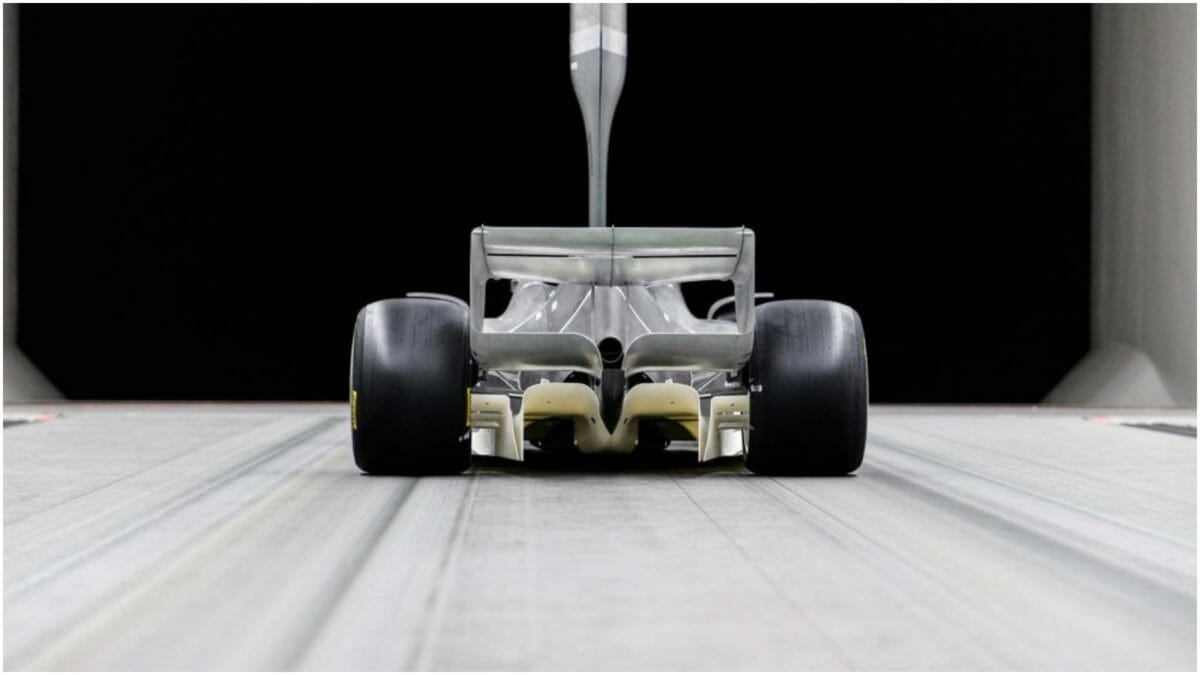Recently, Formula 1 and governing body, FIA, completed an unprecedented amount of research and development using CFD (Computational Fluid Dynamics) to make their vision for 2021 become a reality. However, the next step to confirm that data was by conducting tests in the wind tunnel. So last month, ahead of the German Grand Prix, a model of the latest 2021 F1 car was put in the Sauber wind tunnel under strict conditions of secrecy, for extensive testing. During this wind test, the 2021 iteration was tested with 18-inch wheels and Pirelli’s low profile tyres, also elements such as the sidepod areas and rear wing are expected to remain the same in the final version but the front wing will likely evolve and be changed for improved aerodynamic efficiency.
As you can see, in the video above, a 50% scale model of the 2021 F1 version is running for the first time with 18-inch tyres. There is a rake moving up and down behind the car to measure the airflow behind the car allowing F1 and the FIA to monitor the airflow as they bid to improve the car’s ability to follow another, for better performance and entertaining races. As some of us already know, traditionally 100% scale cars are not used in a wind tunnel as their use was banned a few years ago because of the huge cost of producing the model. So, most teams have now moved to use 60% scale models, while F1 and the FIA have opted to stick with the 50% model. The advantage of using the Sauber wind tunnel is that it is commercially available to hire and it also gets the Swiss automatic rake system which is quite good for testing.
Also Read: British GP: Alex Rins Beats Marc Marquez By 0.013 Seconds To Snatch Victory At The Silverstone
F1’s Chief Technical Officer, Pat Symonds said, “The wind tunnel testing we are doing is slightly different to what the teams might do. The teams concentrate solely on the forces on the car, through a variety of attitudes as they move the car around. While we naturally have an interest in what those forces are and particularly how those forces change as the car moves, we’re even more interested in what is happening to the turbulent air behind the car. For that reason, although we are doing most of our development in CFD, and that CFD is using some pretty advanced techniques which aren’t commonly used by the teams, we want to back up the virtual simulations with physical simulation. We also chose to use a 50% model rather than a 60% model and we chose to run that model quite a long way forward in the wind tunnel, so this gave us the opportunity to best inspect the wake of the car.”
Nikolas Tombazis, Head of Single Seater Technical Matters, FIA said, “pitot tubes with yaw sensitivity, so they can measure the direction, the pressure and the velocity of the flow and so on, mainly the velocity components and the pressure, and in that way we can make sure that what the CFD is predicting is correct as the bulk of the work, 99% of the work, for these configurations has been done in CFD. The fundamental point of all of this is that we are trying to reduce the losses that the following car would face. The simplification of the leading car’s aerodynamics also helps for wake performance because, on one hand, the front car doesn’t have as many methods to control its wake. On the other hand, the following car, not having all these little, very sensitive devices is less susceptible to disruption.”




